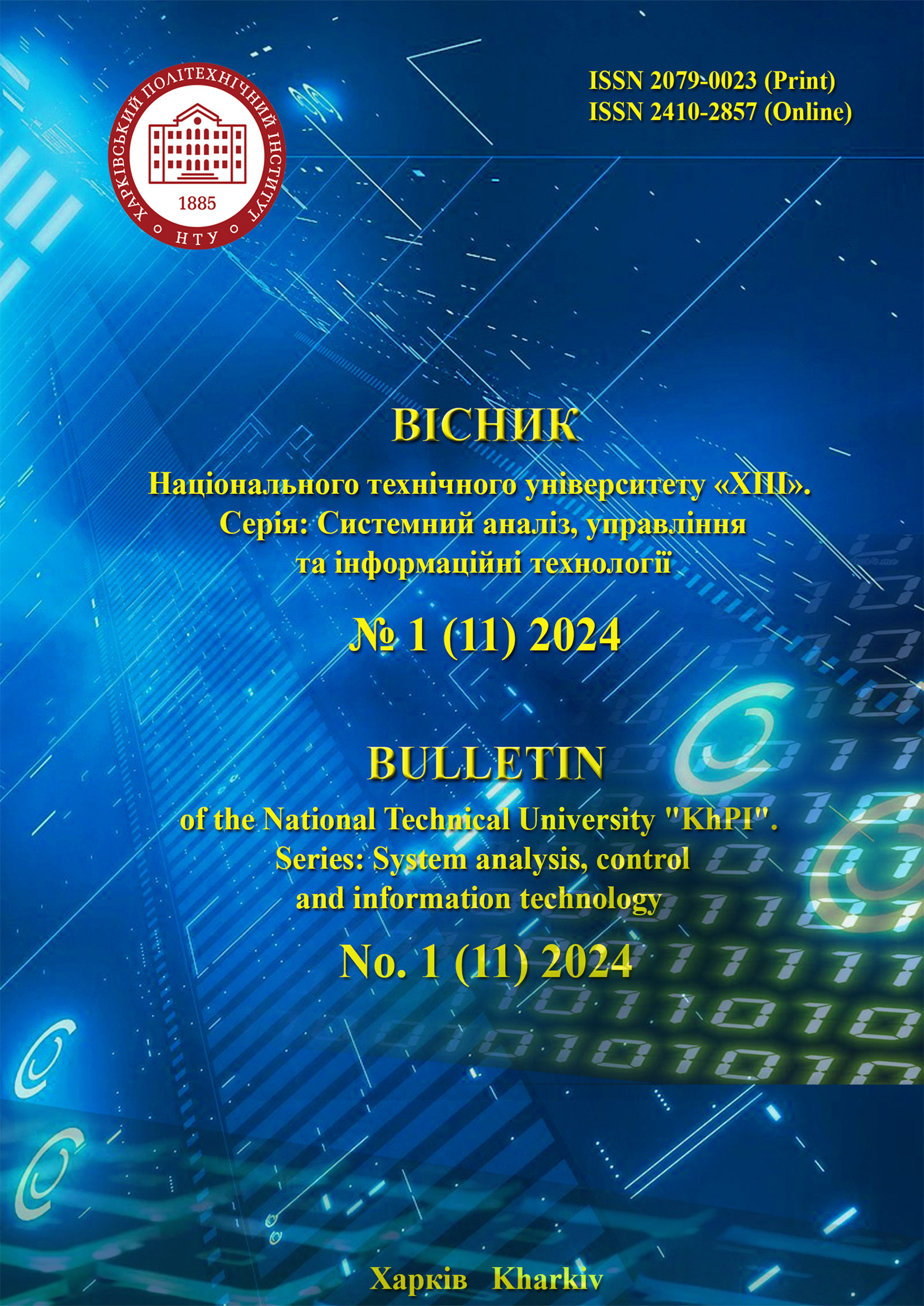APPLICATION OF A NEURONETWORK FOR DETERMINING THE TYPE OF ELEMENTS OF A SYMMETRICAL COMPENSATION DEVICE OF AN UNSYMMETRICAL SYSTEM WITH A ZERO WIRE
DOI:
https://doi.org/10.20998/2079-0023.2024.01.12Keywords:
neural network, Bayesian regularization, structural and parametric synthesis, minimax strategy, zero-wire power supply systemAbstract
In article the possibility of using neural networks in the field of increasing the energy performance of a four-wire power supply system with an uneven load in the phases is being investigated. An uneven load in the phases causes asymmetry of currents in the network and contributes to the increase in the current in the neutral wire, which has an extremely negative effect on both the supply itself and its consumers. To eliminate asymmetry and reduce the current in the neutral wire, you can connect a symmetrical compensating device. Such a device is a set of reactive elements, the parameters of which are determined by search optimization. To determine the type of the required element, the defined parameters are recalculated. That is, the solution of such a problem consists of two component sub-problems – structural and parametric synthesis. This approach provides a high accuracy of calculations, but has a significant drawback: the calculations are cumbersome. In order to simplify the solution of the synthesis problem, it makes sense to determine the type of elements using neural networks, which will significantly reduce the time and resources spent on calculating the values of the parameters of the symmetrical compensating device. The subject of the article is the study of the possibility of using neural networks to predict the types of reactive elements of the symmetrical compensating device. During of the study, the parameters and type of neural network were determined, which provide the most accurate prediction of the topology of the structure of the symmetric-compensating device. The input parameters of the neural network were formed from sets consisting of eight parameters – resistances and inductances of the transmission lines and the neutral wire. The target matrix was formed from a set of data sets consisting of six elements containing information on the types of elements connected (0 – capacitor, 1 – inductance) between phases and between phases and the neutral wire. During research, the results of a quasi-solution were obtained, the values of which turned out to be commensurate with the accurate calculations for determining the structure of the symmetrical compensating device of the power supply system with a zero wire. This indicates the high quality of the developed neural network. Applying the minimax strategy to the received results provides an opportunity to reduce the received values to 0 and 1 to ensure clarity of the results obtained by the neural network.
References
Yagup E. V. Opredelenie rezhima kompensatsii reaktivnoy moschnosti v chetyirehprovodnoy trehfaznoy sisteme elektrosnabzheniya s pomoschyu poiskovoy optimizatsii. [Determination of reactive power compensation mode in a four-wire three-phase power supply system using search optimization]. Tehnichna elektrodinamika [Technical electrodynamics]. 2016,
no. 1, pp. 60–66. (In Russ.).
Yagup K. V., Yagup V. H. Modeliuvannia ta optymizatsiia rezhymiv system enerhopostachannia ta elektrospozhyvannia. Navchalnyi posibnyk [Modeling and optimization of modes of energy supply and electricity consumption systems. Tutorial]. Kharkiv, KhNAME after O. M. Beketov Publ., 2019. 183 p. (In Ukr.).
Yagup K. V., Yagup V. H. Application of Bayesian regularization for improving the quality of electrical energy in the electrical supply system. Visnyk Natsionalnoho tekhnichnoho universytetu «KhPI». Seriia: Systemnyi analiz, upravlinnia ta informatsiini tekhnolohii [Bulletin of the National Technical University "KhPI". Series: System analysis, management and information technologies]. Kharkiv, NTU "KhPI" Publ., 2023, no. 2 (10), pp. 15–20.
Hu W., Liu B., Gomes J. Strategies for Pre-training Graph Neural Networks. Available at: https://arxiv.org/abs/1905.12265 (accessed 01.11.2023).
Dahl G., Jaitly N., Salakhutdinov R. Multi-task neural networks for QSAR predictions. Available at: https://arxiv.org/abs/1406.1231 (accessed 01.11.2023).
Graves A., Wayne G., Danihelka I. Neural Turing machines. Available at: https://arxiv.org/abs/1410.5401 (accessed 01.11.2023).
Haykin S. Neural networks: A comprehensive foundation. New York, McMillan College Publ, 1994. 696 p.
Hlybovets M. M., Oletskyi O. V. Shtuchnyi intelekt [Artificial intelligence]. Kyiv, KM Akademiia Publ., 2002. 366 p. (In Ukr.).
Xianjun Ni Research of Data Mining Based on Neural Networks. World Academy of Science, Engineering and Technology. 2008, vol. 39, pp. 381–384.
Wyner A. J., Olson M., Bleich J., Mease D. Explaining the success of adaboost and random forests as interpolating classifiers. The Journal of Machine Learning Research. 2017, iss. 18, vol. 1, pp. 1558–1590.
Opper M., Archambeau C. The variational gaussian approximation revisited. Neural Computation. 2009, vol. 21, iss. 3, pp. 786–792.
Downloads
Published
How to Cite
Issue
Section
License

This work is licensed under a Creative Commons Attribution 4.0 International License.
Authors who publish with this journal agree to the following terms:
- Authors retain copyright and grant the journal right of first publication with the work simultaneously licensed under a Creative Commons Attribution License that allows others to share the work with an acknowledgement of the work's authorship and initial publication in this journal.
- Authors are able to enter into separate, additional contractual arrangements for the non-exclusive distribution of the journal's published version of the work (e.g., post it to an institutional repository or publish it in a book), with an acknowledgement of its initial publication in this journal.
- Authors are permitted and encouraged to post their work online (e.g., in institutional repositories or on their website) prior to and during the submission process, as it can lead to productive exchanges, as well as earlier and greater citation of published work (See The Effect of Open Access).


